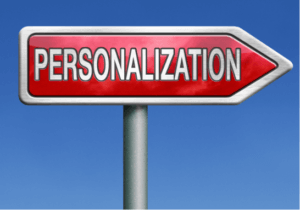Pearl Strategy and Innovation Design recently attended the webinar hosted by Quirk’s Media where experts shared 10 steps to enhance a customer experience strategy that stands out. Here is our take on it.
Summary
Businesses and consumer’s behaviors are undergoing dramatic changes in this new era of AI. Customers have less patience and more demand for personalized experiences. How can businesses make sure their customer experience process will be successful in this new tech-focused world? Here are 10 steps to build a strong customer experience, which can be the differentiating factor between businesses.
Define and Plan Goals
Establishing clear and measurable objectives is fundamental for any successful CX strategy. Consider goals like improving customer retention, reducing service costs, increasing customer lifetime value, enhancing brand reputation, and establishing key satisfaction metrics. Use the SMART framework—specific, measurable, achievable, relevant, and time-bound—to ensure your goals are well-defined and attainable.
Collect and Connect Data from Everywhere
Capture data from all available sources. Customer service interactions, surveys, reviews, social media, market research, and transactional data are all critical. According to Forrester, 80% of the world’s data is unstructured, and this volume is expected to double in 2024. Unifying and interpreting this data is essential for a complete understanding of your customers.

Understand and Interpret the Data
Create a 360-degree view of your customers’ voices. Traditional data analysis methods fall short with the myriad of channels involved. Synthesizing all touchpoints into a single narrative reveals patterns and trends that isolated data silos miss. This holistic view is crucial for understanding your current standing and shaping future customer experiences.
Develop Seamless Customer Journeys
Create a flawless experience across the entire customer journey, from initial contact to post-purchase feedback. Identify and analyze every interaction with an objective lens, focusing on customer expectations, friction points, and areas for creating lifelong promoters of your brand. This scrutiny helps pinpoint operational gaps and opportunities for improvement.
Create Hyper-Personalized Experiences
Leverage AI to create dynamic customer profiles that evolve with each interaction. Use these profiles to tailor marketing messages, product recommendations, and service offerings, making every customer feel uniquely valued. Personalization should extend beyond just names in emails to curated experiences and content that resonate with customer desires.

Measure Success, Identify Opportunities, and Take Action
Measure your strategy’s effectiveness by implementing an analytics framework across traditional customer experience and financial metrics. Customer satisfaction, Net Promoter Score (NPS), customer effort score, customer lifetime value, and cost to serve are essential metrics. Qualitative feedback from surveys, interviews, and social media provides rich insights for creating actions that drive these performance metrics.
Create a Closed Loop
Establish a closed-loop process for collecting, analyzing, and acting on customer feedback in real-time. Implement systems to quickly identify and resolve customer issues, and ensure customers feel valued by taking proactive action. Regularly thank customers for their feedback and share the changes made based on their suggestions.
Empower Your Team
Invest in comprehensive training programs covering product knowledge, service protocols, empathy, active listening, and personalized service. An integrated approach to employee experience (EX) involves continuous feedback through surveys and data from platforms like Glassdoor. Supporting and listening to your teams fosters a culture that enhances customer experiences.

Build a Customer-Centric Culture
Fostering a customer-centric culture requires leadership buy-in, cross-departmental collaboration, and recognition of employees who enhance customer experience. This culture prioritizes customer and employee satisfaction, driving engagement and positive outcomes for both the business and its customers.
Focus on Innovation and Continuous Improvement
Encourage a culture of innovation where new ideas are welcomed, and experimentation is the norm. Embrace failure as a learning opportunity and refine your approach based on what works. Stay ahead of emerging technologies, customer trends, and best practices by integrating advanced technologies like chatbots and reputation management tools.

Implications:
In today’s AI-driven world, customer experience is a critical differentiator for businesses. By following these 10 steps, companies can create a robust CX strategy that meets the evolving demands of customers. Embracing data, personalization, and continuous improvement ensures a seamless, engaging experience for every customer. Ultimately, a strong customer experience strategy drives loyalty, satisfaction, and long-term business success.
Want more insights, strategy and innovation? connect with us at pearl-strategy.ca or John at johnchan@pearl-strategy.ca.
Source: Quirk’s Media, June 11, 2024




